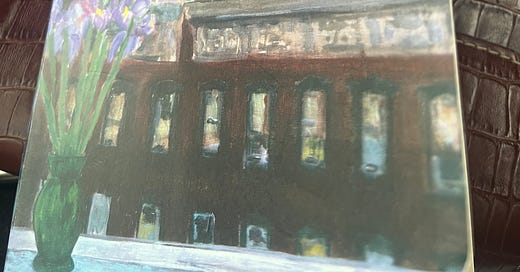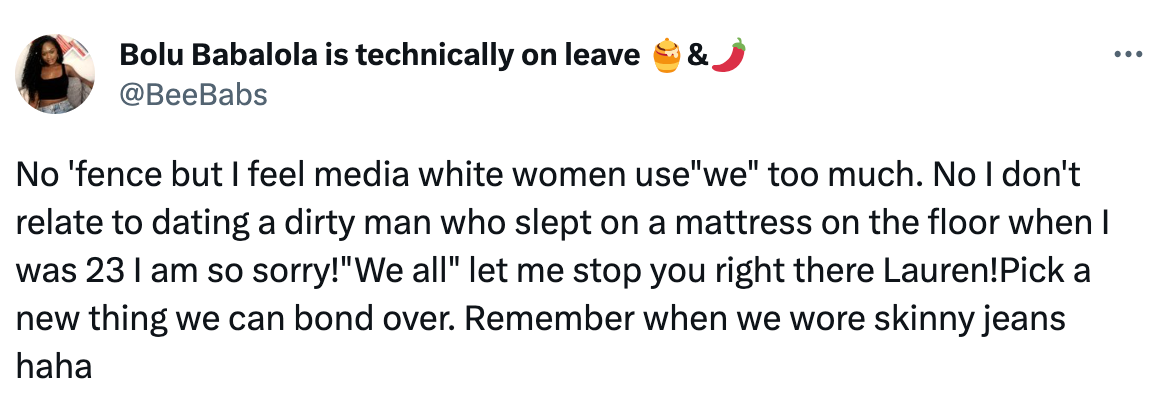Sometimes it’s good to do what you’re supposed to do when you’re supposed to do it.1 Over the last month or so, I’ve been making my way through The New York Stories of Elizabeth Hardwick. I first read Hardwick last summer after a friend loaned me his copy of Sleepless Nights and I quickly fell for her preciseness and her imagery, the way her writing felt grounded even in its most impressionistic moments. For months, I thought about the phrase, “Public assistance, beautiful phrase,” which I read and embraced as a stance on what writing can be, though I now realize that she (likely) meant it more literally, as in welfare or other forms of social work. There’s no wrong way to read (except uncritically I guess) but I do feel like I read Hardwick the wrong way that first time in that I missed the political stakes of her writing. Reading The New York Stories, it’s harder to miss the way that Hardwick is invested in capturing the political mood. In the story, “On the Eve,” as an older man drifts between his home in the East Eighties and the West Side, where his sister lives, he (or the narrator) turns over his own transition from “Marxist youth” to “a neoconservative, something of a hero of the counterrevolution.” This transformation does not belong to him alone but belongs to his generation, a generation whose “elated predictions of capitalist catastrophe” have become “shriveled balloons.” Despite his new beliefs and his attempts to cement the transition through political autobiography, there’s a sense that his transition to neoconservatism fits just as unevenly as the Marxist beliefs of his youth.
My favorite stories in the collection are those of wavering intellectual ambition and flagging discipline, especially “A Season’s Romance” and “The Bookseller.” As I mentioned a few dispatches ago, I am feeling particularly unmotivated this summer and so I overidentified with “A Season’s Romance,” a story that follows Adele, a newly minted art historian who embarks on a trip to Europe for a postgraduate fellowship. Burnt out after years of intense discipline and focus (“She feared she had used herself up in the preparation and had no freshness left for the genuine moment”), she finds herself unable to do any of the research or writing she has committed herself to completing. Worse, she finds herself unable to care. Swept up in an affair with a fun-loving overspender, Matt, she succumbs to a fauxalite (fake socialite) lifestyle, her dreams of “reviewing for the papers and journals, of writing original monographs” always lingering in the background. Her ambition may not shrivel but the capacity of her life to hold it does. Whether Adele’s active stagnation—she’s always on the move but not moving towards anything—is her eternal fate, is left open. Hardwick is hesitant about (auto)biography; it can only tell so much and it’s “truth” or facticity is always up for debate. Like with the man in “On the Eve,” an attempt at Adele’s biography, an attempt such as “A Season’s Romance,” can only predict as much as it tells which, in Hardwick’s configuration, is not much.
Last Sunday, it was reported that Jane Birkin had died. Even though I was never a full Birkinite (being a C-cup since the 7th grade, I chose Brigitte Bardot in the French girl wars), it was impossible to be a girl who cared about fashion to not, if just for a moment, care about Jane Birkin and her certain (as was the popular terminology back then) je ne sais quois. Following the news, I found myself thinking about Birkin a lot, while dreading the publication of pieces trying to sell us FRAME jeans or convince us to Klarna vintage Birkin (I actually don’t know if this is possible). The effortlessness of Birkin’s style over time has been sold to us many ways over the years but I think Rachel Tashjian and Liana Satenstein’s tributes make clear is that what made Birkin’s style so appealing wasn’t the military army jackets or the men’s jeans or the overstuffed Birkin bag. It was that her style was a lived experience. The appeal was less about the specific items or even the styling (though that was part of it) but that she had a personality, which was a great part of her allure. It is why no one can ever truly embody her, even if they had the right jeans or basket bag. (For the record, Alexa Chung truly is the only person who has come close to doing Birkin as good as Birkin, and she manages to make it her own thing because she has a personality!) For a while I’ve been thinking about how personal style seems to feel more important than ever. We can’t get away from takes on personal style (I am doubly guilty). Even as microtrends emerge and turn over faster than it took me to run the mile in middle school (9 minutes and 49 seconds), wanting to define your personal style is a tangible anxiety. We all seek to find it in a Sandy Liang top or vintage Miu Miu shoes. If we’re going to conform, we still want to do it in the register of the “I”. Part of the anxiety is the desire to fast track something that takes, well, a lifetime to construct. If good, maybe great style, can only come from living, there is no way to fast track that. You can stop buying iced oat milk lattes so that you can retire by 30 but it won’t do anything for your style. Personality is at the heart of style and personalities cannot be bought! They thrive and grow by just being interested in things and engaging with them and reading books and watching movies and having dinner parties with your friends! (The best shirt I own was purchased in response to a friend’s dinner party moodboard.) No one can say if you’ll come out of it having Jane Birkin icon status. But the chances you’d achieve that was always low. Better to have something that’s yours.
Like everyone and their mother, I saw Barbie this weekend. I had a really good time. Leading up to it, I did my best to dodge the discourse because I didn’t want to be too influenced (I’ll be the first to admit that I am susceptible to a strong take). But I couldn’t avoid absorbing the conversation about selling out (in general), the ad-like nature of the film, and the question of whether Gerwig could maintain her artistic vision and credibility while shilling for Mattel. I was less interested and conflicted about the conversation about whether the film was going to be feminist or not, because the answer was always no. Not to make my experience the measure of all experiences but I can tell you that as much as I loved playing with my Brandy Barbie when I was five, my ideas of womanhood (positive or negative) were never tied to the doll. While Barbie (2023) is a lot of fun, there’s no getting past the fact that it’s an one big ad that uses “female empowerment” to sell us dolls and cars and Chanel. The selling is not secondary to the story. Even as the movie pokes fun at Mattel and corporate greed and “patriarchy”, it holds back. In regards to whether we can locate something that feels like Greta Gerwig in the movie, we definitely can but even that feels compromised by the nature of the film’s commercial interests. The moments that, in a different Gerwig feature, would have us weeping or that, in another world, would become endlessly reblogged Tumblr screencaps feel cheap alongside the rest of the film. I want to say that all this doesn’t take away from the quality of the film but…it kinda does. I know Richard Brody is fighting for his life defending this movie but if we’re being real, it is a FUN TIME and a just-OK movie.
Required Reading
Delia Cai, “We’ve Reached Peak Girl”
Michelle Santiago Cortés, “Girl Internet”
Thanks for reading! I’m in Boston till Monday, not reading Crime and Punishment and trying not to think about the 5 weeks of summer left.
Frances Ha (2012) re: reading Proust in Paris





